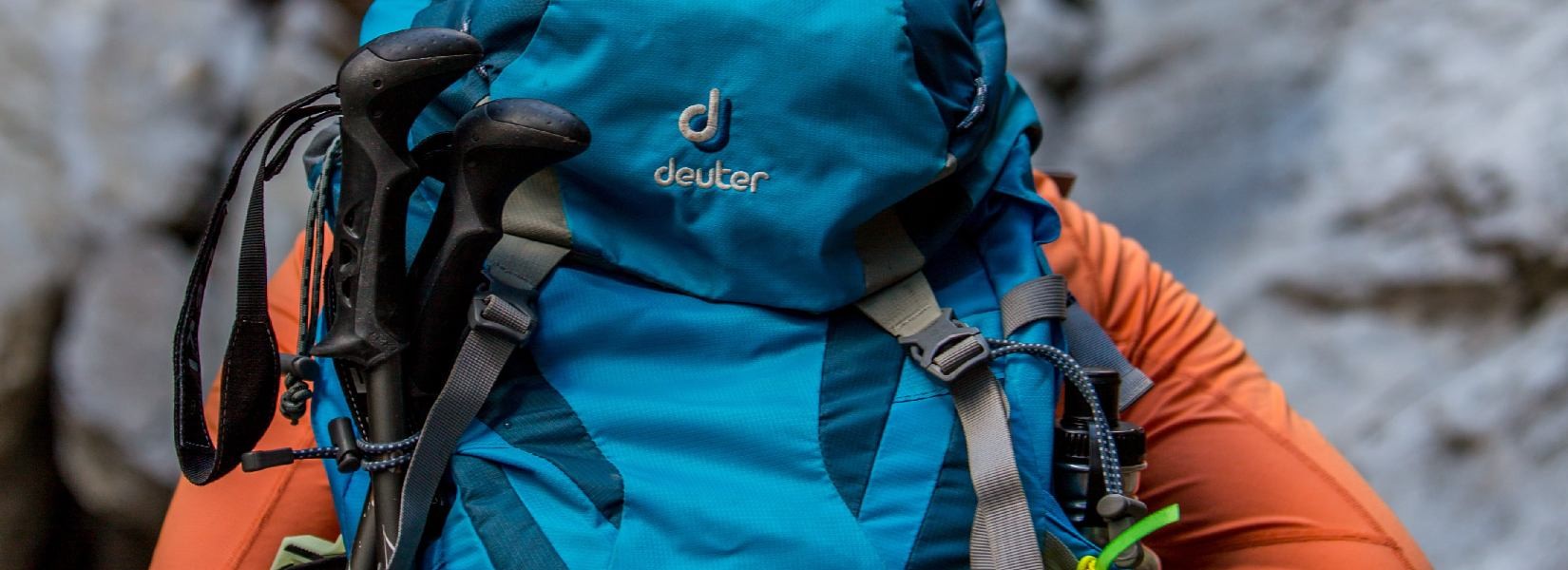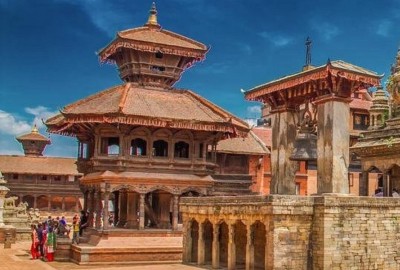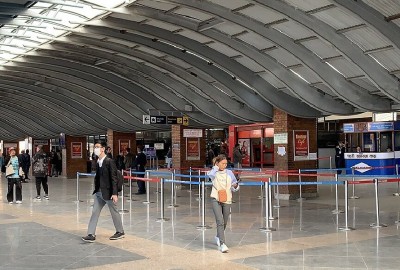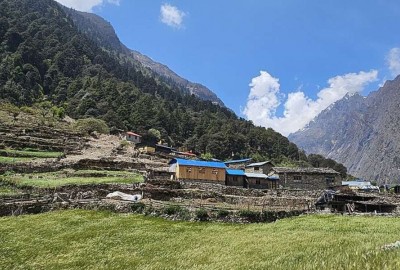Buying Trekking Gear in Kathmandu
Kathmandu’s Thamel area is jam-packed with everything that relates to trekking. In every street of Thamel, you will find a trekking gear shop. While some of the shops sell genuine goods with a hefty price tag, most of them are cheap local knockoffs, but they do the job just as fine. You should always try to negotiate on the price before buying though.
If you have a few days to spare in Pokhara and Kathmandu before your trekking starts then you can easily prepare the essentials. The only problem you will have here is if you have children or if you have bigger body proportions. Trusting the quality of the product found here is up to you but gear here is comparatively much cheaper than in other places.
It is best to bring your gear with you if you do not have a lot of time, as instead of hustling and bustling from one shop to the next to buy gear, you will get to enjoy your time sightseeing in Kathmandu. If you are trekking to Everest Base Camp then you will also be able to buy gear in Namche bazaar in case you have forgotten something. The prices are somewhat cheaper but are fixed and you won’t be able to bargain here. While nothing is of any designer brands, it will do the job just fine.
If you are low on budget or are limiting yourself and buying trekking gear on a budget then we recommend you do not cut back on some of the really essential stuff that will protect you from losing your toes and fingers. While it is possible to keep the cost down, trekking in Nepal is expensive. So if you are really low in cash, you should probably wait a while before trekking.
Important Items
There are three essential things that you need to have when it comes to trekking in Nepal. The three things are your passport, all the required trekking permits, and your insurance details. While your permits will be checked along the way, the other two are just in case of an emergency. Remember to keep them in a waterproof pouch in order to keep them safe.
Sleeping Bag
While teahouses are cozy and great accommodation options, they only hand out blankets, which are often a little shabby and could be unwashed between seasons. Also, they are not warm enough on their own at higher altitudes, so carrying a sleeping bag is a must. Anything from a -30 to a 0-degree bag is adequate depending on the season and altitude you are traveling in. You should always be prepared in case it gets colder than you anticipate.
Sleeping bags are hefty to carry and sometimes you wonder if they are worth it or if you can make do without one. If you are coming to Nepal particularly to trek at higher altitudes and buying or carrying equipment is not an issue then you should definitely take your own high-quality sleeping bag. For lower altitude hikes, it is not a necessity although you can take it. A good solution for lower region treks is to take a sheet or fleece sleeping bag liner instead of a sleeping bag. While the lightest bag is a 1.9 pounds mummy bag, it is not suitable for all 4 seasons. The bag you should be buying should be something that is suitable for all 4 seasons like the Hyke and Byke Shavano’s slightly bulkier 2.9 pounds bag which provides extra warmth at the cost of an extra $40.
Sheet Sleeping Bags and Sleeping Bag Liners
A really good travel investment to make is purchasing silk, cotton or thermal sleeping bag liners. They are not of much need if you are taking your own sleeping bag, but if you plan on traveling without one or hiring one then they are much handier. To reduce bulk and weight, it is recommended that you get mummy shaped sleeping bags. Weighing under 350g, the Sea to Summit Reactor Extreme claims to increase temperatures up to 14C to a sleeping bag and comes as a box foot-shaped package with a drawstring hood.
Warm Jacket
A warm jacket is another crucial piece of material that you will need. Usually, trekkers prefer down jackets over other jackets as they are very warm and do not take a lot of space as they can be stuffed down into a small pack for days. You can rent or borrow down jackets in Nepal at a very reasonable price if a down jacket is not something you want to invest it.
Worn-in Hiking Shoes
You are definitely going to need a good pair of hiking boots if you are heading out to Nepal to hike. In order to break in your shoes, you should wear them for a couple of times to avoid any blisters or sores that you could get while hiking. Ankle boots are also a great pair of walking shoes and if you find one that is waterproof then it will prevent your feet from getting soggy when you have to trek through heavy rain or snow.
Toilet Paper
Toilet paper is not widely used in Nepal as it is replaced with water washing. While you will occasionally find spray guns, you will most often find water buckets which can be used to wash after using the toilet. While you can use water in the lower regions, as you get to higher altitudes, often there will be no running water or the water might freeze overnight so using toilet paper is a must during those days. You should take a couple of rolls with you and if the supply finishes you can always buy new ones along the way.
Water Bottle
While a reusable water bottle is not an absolute necessity as you will be able to buy water along the trek, it is inherently better for the environment as well as your pocket. Nepal’s trekking trails get a lot of plastic thrown in them resulting in a massive plastic waste problem. To reduce this, a trekker has to be conscious of their responsibility towards nature. A reusable water bottle can be refilled along with the steps along the way and can even carry other beverages. If you are worried about the quality of water then you can carry water purifying tablets and to purify the tap water you can carry a Steri-pen.
Suncream, Sunglasses and a Sunhat
When trekking in Nepal, high altitudes and clear mountain air mean that the sun is at its brightest. Even while walking through the freezing cold you could be getting burnt. You should bring a bottle of high SPF sunscreen to protect yourself from getting sunburnt. A sun hat will help protect from heat stroke and a pair of sunglasses will protect your eyes from the glare of the snow. Bring a small bottle of high factor sun cream to protect your skin.
Lip balm and Moisturizer
It is always recommended to carry lip balm and moisturizer with you as the mountain air tends to dry out your skin and lips. A tube of moisturizer and a small lip balm will really come in handy.
Head Torch
Having a head torch is really important as often there will be no power in the bathrooms as well as the bedrooms of the teahouses. You might also be trekking in the dark in some of Nepal’s treks like on the Thorong La Pass on the Annapurna Circuit Trek and at Poon Hill on the ABC Trek. It is really essential to have a head torch so you can see the path for these days.
Cash
On most trails, there will be no ATMs so you will have to carry all the amount of cash you will need during trekking. You will probably have to be carrying hundreds of dollars of cash in Nepali rupees if you are on a long trek. You should store the cash in a safe and secure place so that you will not lose it. You should also split up your cash and carry some of it with you and some in your day bag. Another good idea is to split the cash up between your backpacks. You can also put some amount in a pair of socks and another in your laundry bag. This way you will have money left if one item gets lost or stolen and you can keep going on with the rest of the money.
Miniscule Games
The pleasures of modern life are non-existent on the hiking trails. You will have no computers, TVs, and Wi-Fi and even if there is wifi it is not of surfing quality. You can take some minuscule games with you like UNO or a pack of cards. While the porters and local Nepalis will probably not be accustomed to UNO, they will surely contend with you in a hearty game of cards. You can also ask your guide or porters to teach you some of the most popular games played in Nepal.
Book and Travel Diary
You can also keep a diary to document your journey along the way and keeping a book with you have never harmed anyone. If you journal your way through the trail, when you look back and read it you will remember how you felt during that time of the day much better. When you are walking for a long time, the villages will tend to kind of blur together and you can forget where you have been and where you have not. A diary will help you keep a record of all the faces you see along the way. You will find many books related to mountaineering or fiction in general at many bookstores in Kathmandu and Pokhara.
Trekking Poles
Trekking poles will be a blessing for your ankles and knees when you will be hiking through snow. The poles will take some of the pressure off of you when hiking uphill or downhill. If you are only going to use them for a while, it is not necessary to get a really expensive one. In Nepal’s cities, you can get them for very cheap in trekking shops.
Electronic Equipment for Trekking and Visiting Nepal
Power Packs and Solar Chargers
You will need electricity back up if you are very dependent on electronic devices like kindles, phones, and laptops. It is normal for guest houses to ask for payment in return for charging your phone up in the mountains. They will either charge your per charge or by the hour. It is recommended to take devices with ultra-fast charging capabilities. You can also take solar powered power banks as a better option as you can charge it as you walk. It is a good idea to take it if you are traveling for a longer period of time. As the solar-powered power banks are quite heavy, it is recommended that you carry a smaller and lighter regular power bank. If you forget to bring one, you can get them at Kathmandu and Pokhara.
A Good Camera Phone or Camera
Due to the cold of the mountains, the batteries will lose their charge very quickly, so you will need to bring spare batteries. It is best to take plenty of memory storage for your trek as you will not be able to take your laptop and the internet coverage is also not that great. It is recommended that you do not take an overly expensive camera as many problems may arise like your camera getting stolen or frozen. It is recommended that you keep your cameras, phones, and batteries inside your sleeping bag with you at night to keep everything warm. You can put your camera inside your fleece during the day. Instead of a camera, you can also take a phone as they are significantly lighter. Technology has advanced a lot and nowadays there are cheap phones with great camera quality.
Smart Trekking Watches
While a trekking watch is not a necessity, it is nice to have a watch with a thermometer, GPS, altimeter and a barometer. You can also make a watch which measures your heart rate. You will be able to track your ascent, descent, pace, and distance traveled. Knowing the speed you are taking lets you have a better idea about the distances.
Other Essentials
Along with these, there is plenty of other stuff you will be stuffing your bag with. For trekking clothes, clothes that are light and quick to dry are ideal as well as clothes that can be layered. At higher altitudes, it will be very cold so you will need to layer your clothes. For when you do not want to walk around in trekking boots, you could take light shoes. You should pack a few pairs of wool socks with varying thicknesses. Lightweight trekking pants along with trekking shorts are recommended. T-shirts made from lightweight wool are also ideal. You should also pack on a few pairs of clean underwear. A warm hat and gloves are a must for traveling at higher altitudes with colder weather.
For extremely cold weather, you should pack long underwear or wool thermals as well as a sweater and fleece shawl. Waterproof jackets and pants are recommended if you are going to be walking around in the snow so your clothes do not get soggy. Heavyweight pants are great for high elevation and are also good for camp. A heavy down jacket is a must and it can be rented in Kathmandu.
If you still have space left in your bag after packing then you can fill it up with snacks. Snacks can be bought for cheap in Pokhara and Kathmandu. While the food is reasonably priced in the trekking trails of Nepal, minuscule snacks like chocolates can get quite expensive. So if you have a sweet tooth and you know that after a long, tiring day, you will crave chocolate, then you should take some with you. While chocolates do give you a short-lived exhilaration, you should be mindful of the plastic wrappers you will be leaving on the trail. For a healthier option, you can have local dried fruits and food made in the teahouses which will not leave litter along the trail.
Another thing you should take is a first aid kit in case something goes wrong. You should also include the first aid kit with moleskin for blisters. Duct tape is also a good thing to bring along as it can temporarily fix just about anything. You can wrap the desired amount of duct tape around a pencil If you do not wish to carry the entire roll.
All the essential things for your trek as well as your clothes can be bought in Kathmandu and Pokhara for a reasonable price. If you have bought new equipment for trekking and do not want to take it back along with you then, after the ending of your trek you can donate your clothes to many of the trekking companies housed in Nepal. The clothes you donate are used to clothe porters and guides.
Download Trekking in Nepal Packing Checklist in PDF
Need Help Planning a Trip to Nepal?
Feel free to contact us, if you need any help planning your trip to Nepal. Our local travel experts will design a custom-made itinerary based on your time, group, cost, and other requirements.








